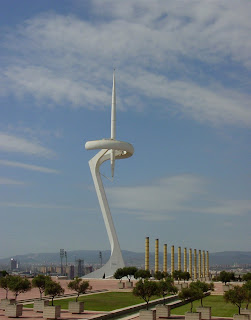
When I was away in London earlier this week, I took the train from Waterloo every morning to Woking. Going to Waterloo was interesting as it was used in a fantastic chase scene in my favourite film of last year, the Bourne Ultimatum. If you want impressive train stations though, the newly refurbished St Pancras looks fantastic and sipping champagne at the champagne bar is a truly continental experience.
Unfortunately, I always find travelling and staying in London for any length of time extremely tedious as it is just so ridiculously expensive, busy, and overcrowded. Fortunately once I had escaped the throngs in Waterloo, I walked out onto Southbank to see the London Eye which was lit up in magenta to celebrate Valentine's Day. The Eye is a truly impressive feat of engineering and it looked spectacular at dusk. The photos are slightly blurred I'm afraid as they were taken with a slow shutter speed but you'll get the idea!



